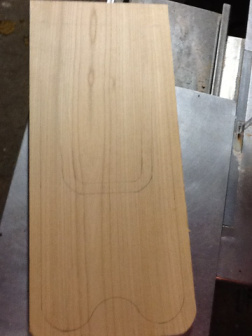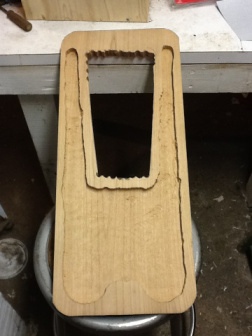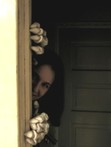I’m Crazy (But You Knew That Already)
Well.
After a fascination with medieval music, and feeling completely weird at SCA events playing a modern guitar or ukulele, I have got myself in way, way too deep.
I’m building an Anglo Saxon hearpa, or lyre — basically, a primitive lap harp. This is the type of instrument that would have been played as backup to a recitation of “Beowulf” or other epic poetry, this is the type of instrument the bards (Anglo Saxon “scop“) would have played in Hrothgar’s mead-hall during festivities and dancing. There are many types of hearpas; mine will be oblong, a bit smaller than the “standard” ones as seen on YouTube, and with modern tuning machines (straight banjo or ukulele style) since I lack the skill and tools necessary to create authentic pegs. I am planning to string it with nylgut strings (a synthetic alternative to authentic gut strings, which are expensive, tetchy, and hard to come by), however, I am not ruling out the option of steel strings.
We shall see how it proceeds! 
 Yesterday afternoon, my husband helped me draft the basic design onto the wood. I selected a twelve-inch wide by inch thick Hemlock board (a coniferous softwood native to North America and Eastern Asia, that actually becomes more of a hardwood as it ages) on the basis of cost and the fact that it was the most responsive of the boards I looked at. When I placed my ear next to it and tapped, the board easily carried the sound and vibration along its length. By contrast, the oak and maple boards (traditional instrument making hardwoods) seemed sluggish, in addition to being more expensive and smaller in size. Not having much experience in lutherie, I’ll admit I’m kind of swagging it. I had the opportunity once to play on a three thousand dollar guitar, and I remember how it sang along it’s entire length when strummed or tapped, like the whole instrument vibrated. I figure that by picking a board that “sings” when tapped, I’ll have a better chance of the final product turning out with those properties than if I have to force a board to “sing” through the process.
Yesterday afternoon, my husband helped me draft the basic design onto the wood. I selected a twelve-inch wide by inch thick Hemlock board (a coniferous softwood native to North America and Eastern Asia, that actually becomes more of a hardwood as it ages) on the basis of cost and the fact that it was the most responsive of the boards I looked at. When I placed my ear next to it and tapped, the board easily carried the sound and vibration along its length. By contrast, the oak and maple boards (traditional instrument making hardwoods) seemed sluggish, in addition to being more expensive and smaller in size. Not having much experience in lutherie, I’ll admit I’m kind of swagging it. I had the opportunity once to play on a three thousand dollar guitar, and I remember how it sang along it’s entire length when strummed or tapped, like the whole instrument vibrated. I figure that by picking a board that “sings” when tapped, I’ll have a better chance of the final product turning out with those properties than if I have to force a board to “sing” through the process.

The rear half of the body, with the sound cavity sketched out.
Last night, between my husband and I, we got the basic design roughed out. My husband cut out the basic shape with a band saw and a chop saw, and I took up initial sanding with a Dremel.

The front half, looking at the inside of the sound cavity.
I’m also doing things a tad differently in that I lack the ability to do the traditional body + soundboard veneer design due to availability of materials (especially the super-thin soundboard; I refuse to use basic grade plywood!). Therefore, I am attempting to sandwich a front and back together. Should this work, it will create more space in the body cavity for resonance and sound production. On the plus side, solid wood has better resonance properties that will only get better with age (it’s why “solid top” instruments often fetch three times the price of even the best laminate top instruments; a solid top will sound better over the years, whereas what you hear with a laminate will not change from the day you pick it up to the day you die).
This morning, I spent about an hour sanding with both sandpaper and the Dremel, smoothing out the soundboard sections and husband helped smooth out the walls with a woodworking chisel. I’m planning on working on it some more tonight. LOTS of sanding to do! 











